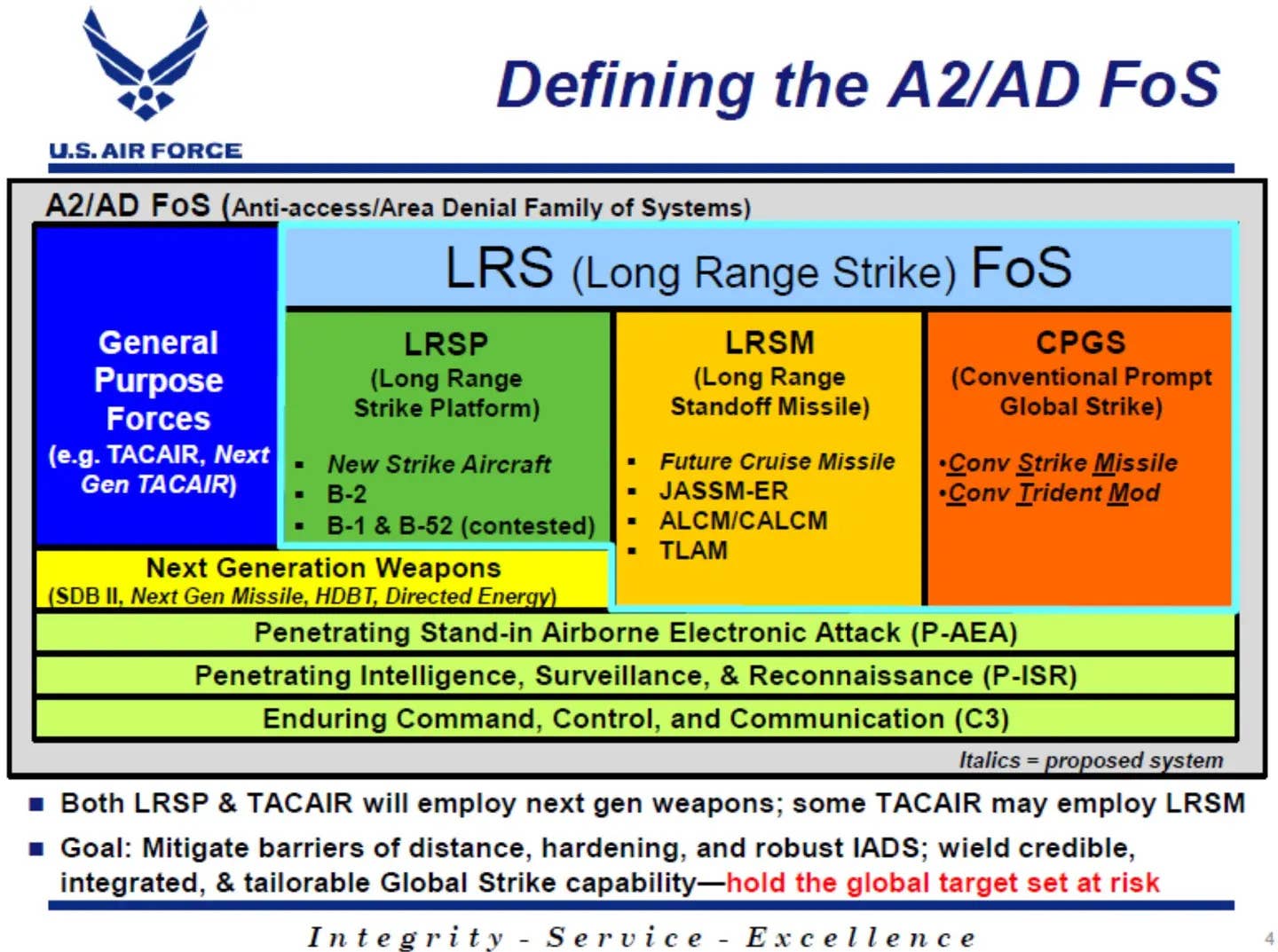- Joined
- Aug 22, 2010
- Messages
- 32,730
- Reaction score
- 9,866
Preliminary Analysis:
- The B-21 is an imposing, futuristic-looking machine as expected. While its roots emanate directly from the B-2, it is hugely apparent, this aircraft takes low observables (LO; stealth technology) to another level.
- The aircraft appears notably smaller than the B-2 when viewed as a whole head-on. This is not surprising, we knew it would be a smaller flying wing design and one that would sacrifice some weapons payload.
- A great indicator of this is its landing gear. It is a single truck design instead of the tandem dual truck design (two tires on each main gear instead of four) on the larger, heavier B-2.
- The aircraft’s nose wheel door is different from B-2’s in that it doesn’t feature a central, forward door, instead all associated doors open the side. Nor do they have serrated edges like the B-2’s.
- The windscreen that looked so puzzling in renderings is a bit more normal looking in reality. In fact, it is remarkably small with visibility very much optimized for viewing upward and forward. This makes sense for aerial refueling procedures. Beyond that, the visibility looks very poor out of the aircraft. The side small windows, which are curved as in the rendering, look as we originally posited, to likely be a low-observable compromise, with their shape minimizing the aspects that they can be seen by radar, especially from below. It will be interesting to learn more about how this feature came to be and just how far having no windows at all was pushed during the B-21’s design. There were serious discussions of the B-2 having no windows to maximize LO even back in the 1980s when issues with the windscreen and its inner tintable (for sudden nuclear blasts) removable pane were prevalent.
- The aircraft is indeed a very light gray color! This is critical. As we noted many times before, the B-21’s very low observable capabilities and its far broader, more eclectic mission set, would likely see it be put to use during the day. These colors point exactly to that. This may change as the aircraft matures, but at this time, it looks as if the era of locking stealth bomber operation into the dark of night will soon be over. You can see a thread I did on this just earlier today below.
- Broadband, very low observable design cues are abundantly visible. The entire aircraft, as much as we can see of it, is incredibly smoothly blended. Individual features and elevation changes are minimized totally. The inlets, which were a major challenge during the aircraft’s development process, are remarkable. They appear blended seamlessly deep into the flying-wing design, minimizing line-of-sight to them and the disruption to the aircraft’s flowing, almost shell-like very low-observable airframe. In close-ups, an internal duct support pillar or air splitter can be barely seen. Compared to the B-2, this is a revelation.
- No apertures for missionized sensors, air data sensors, or communications arrays can be seen anywhere. In fact, no heavy panel seams are seen at all. Some taped seams are seen around the cockpit windows and in a few other areas in close-up photos, but these are minimal really. New material sciences, construction, and design capabilities mean that very large composite components can be built and assembled, minimizing the number of airframe components and thus the need for many joints and seams. This is paired with major advances in LO coating and structures to drastically reduce the high maintenance costs and long downtimes associated with low observable aircraft. Fewer seams and panels to deal with would be part of this solution. Load bearing sensors, which are part of the airframe themselves, could (and likely area) part of the B-21’s revelatory design.
- There is no sharp ‘beak’ like on the B-2. Instead, this aircraft appears to have, as we have posited before, more of a ‘duckbill’ straight shelf along its leading edge to maximize LO qualities.
- We are only getting the frontal aspect here. There is so much more of the story to tell. We still don’t know exactly what the B-21’s planform really looks like, although it is very likely to resemble what we already know and it harkens back to the early B-2/ATB designs (read more about that and the B-21’s potential ability to fly higher here). The exhausts, arguably the most sensitive part of an LO design, are also a total mystery. Also, this is just the first airframe and we are likely to see additional changes, although minor in nature, to its features as it progresses towards its first flight. But Northrop Grumman has stressed heavily that this aircraft is groundbreakingly production representative, so just how much things could change is unknown. And we have no idea what systems, especially missionized ones, are even installed on this aircraft.
- The aircraft is clearly an extremely efficient design, which will lend itself to the great ranges it will have to fly. We also see here just how generous the internal volume of this design is, which will also lend itself to very long-range, as well. It also has to be able to carry at least one GBU-57/B Massive Ordnance Penetrator (MOP), or about half the payload of the B-2. Clearly, there is a lot of room in there to make that happen while also having a high fuel fraction. While we just see it in two dimensions, without depth, the two saucers welded together-like cross-section of the aircraft is very apparent in head-on viewing. While even significantly smaller than the B-2, it still looks imposing head-on. Side-on, I would imagine it would look very different, although without the B-2's serrated tail, the length of the B-21 may be a bit more substantial proportionately speaking. It will still look bizarrely small side on, like its older sibling.

https://www.thedrive.com/the-war-zone/this-is-the-b-21-raider-stealth-bomber



